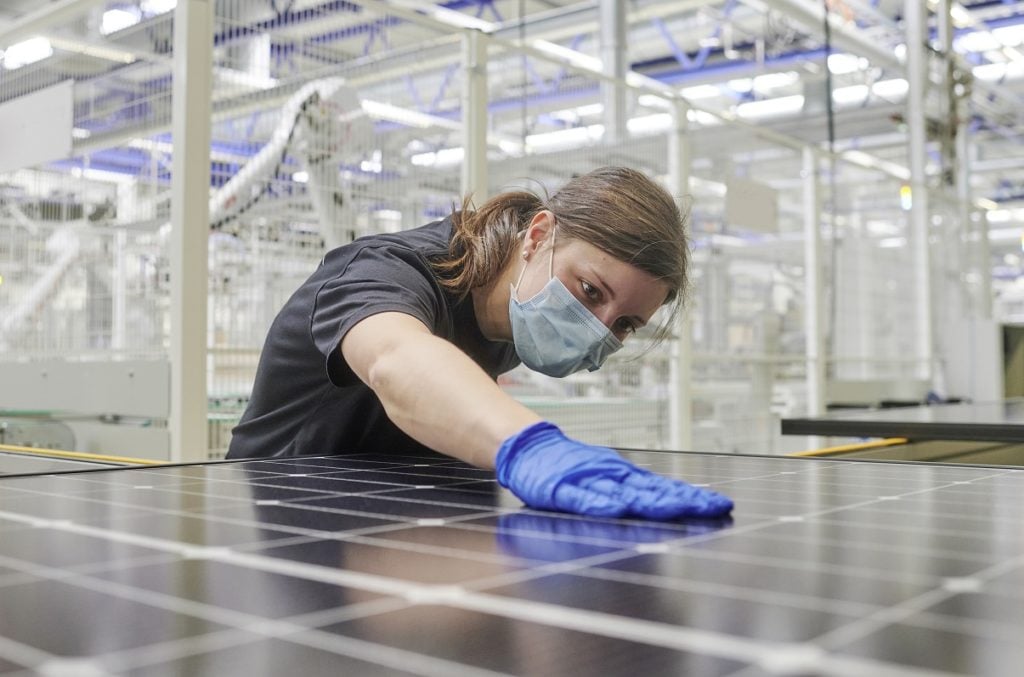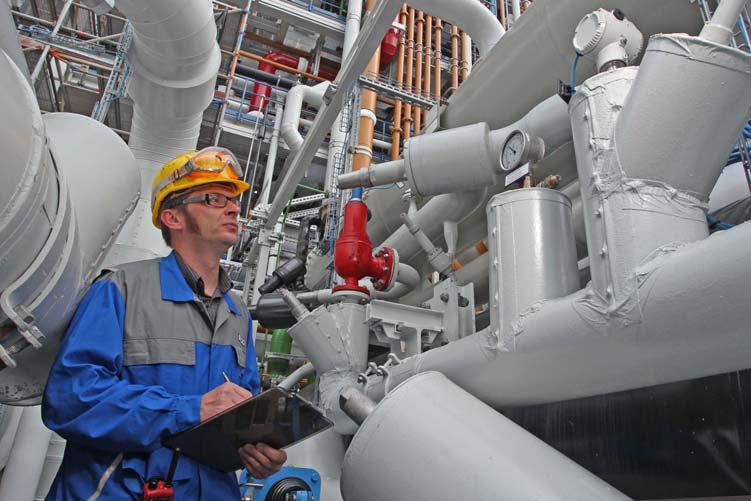
Until recently, purchasing solar modules within Europe had been relatively simple owing to the lack of any meaningful tariffs or duties on cells or modules made in China. However, this is now changing drastically and is being stimulated by corporates that are having to consider ESG issues and manufacturing origin. Across Europe, module buyers are now asking the same questions on module suppliers that have been part of due diligence processes by US buyers for the past few years.
While the US is now handing out subsidies to domestic manufacturers in order to stimulate Made-in-America products, the prospects for a manufacturing revival happening in Europe are still forming. European manufacturing has been decimated in the past decade, with most ‘local’ module suppliers simply being resellers (distributors) of made-in-China components.
Unlock unlimited access for 12 whole months of distinctive global analysis
Photovoltaics International is now included.
- Regular insight and analysis of the industry’s biggest developments
- In-depth interviews with the industry’s leading figures
- Unlimited digital access to the PV Tech Power journal catalogue
- Unlimited digital access to the Photovoltaics International journal catalogue
- Access to more than 1,000 technical papers
- Discounts on Solar Media’s portfolio of events, in-person and virtual
If the PV market in Europe was dominated by rooftop (and especially residential) installers, this may not be a major concern. But the PV industry in Europe (like the rest of the world) is now a corporate and institutionally funded energy sector and ESG is now a topic that has board-level priority and is non-negotiable.
These topics are set to dominate the first European staging of PV-Tech’s highly-regarded PV ModuleTech conference series, due to be held soon in Malaga, Spain on 29-30 November 2022. The list of topics, speakers and attendees for this event have been chosen specifically to help European module buyers today and how to best deal with supplier deliverables over the next few years.
Within this article, I discuss in more detail why module supplier selection by European-based entities is proving so hard to understand fully and why buyers need to get back-to-basics in terms of learning who-makes-what and where through the value-chain. Also, I try to put some perspective on what can be expected in the short-term when it comes to European-made product for utility-scale solar farms.
Brushed under the carpet for way too long
The last time Europe had meaningful module capacity was when SolarWorld was a leading player in the sector about a decade ago. The company had been instrumental in Europe setting a Minimum Import Price (MIP) on modules being made in China and shipped to Europe – the only time Europe had a collective tactic to try and restimulate domestic production.
However, before MIP had time to sink in, the market was flooded by modules made in Southeast Asia and eventually there was little-to-no domestic manufacturing left to save and the MIP was scrapped. Thereafter, it was back to business-as-usual and Europe became an open door for modules (and all sub-components) being made in China.
And to show how banal the whole exercise was, module producers within Europe that had previously made modules then started to outsource to China and relabel with phrases such as ‘Engineered in Europe’ or ‘Designed in Europe’. In-house ‘capacity’ then changed to warehouse size (as if a distributor) or testing capability (as if a third-party lab).
As module purchasing in Europe reverted to buying direct from China, other changes were happening upstream within China’s manufacturing segment. Polysilicon plants were being established and expanded across China (including Xinjiang). Ingot and wafer production was becoming dominant, to the point where about 99% of wafers produced for solar cells were made-in-China.
Finally, the supply-chains for module suppliers changed radically, as companies that had previously made wafers and cells in-house started to rely on the wafer/cell powerhouses that had been created domestically (such as Tongwei and Aiko).
As such, buying a module from a supplier (and doing a factory audit on a module fab) was just the tip of the iceberg when it came to component origin-of-manufacture (polysilicon, ingot, wafer and cells). Today, only a fraction of module suppliers make their own solar cells. Even fewer (less than a handful) make their own ingots and wafers. And only one credible silicon-based module supplier (Tongwei) has fully-integrated poly/ingot/wafer/cell/module in-house capacity, albeit fully based in China.
ESG aside, the need to know who-makes-what-where has never been more important. And this includes the module in cases where suppliers are contracting out module build to OEM’s (or using competitors’ production lines for OEM product).
Now, when you add in the need for ultra-scrutiny of the key BoM components (raw materials, polysilicon, ingot, wafer and cell production), it is clear to see why 1) so many module suppliers are reluctant or can’t give guarantees on future modules supplied and 2) how much of a dilemma this poses for the industry as a whole, but European buyers in particular that have not been forced to consider this in the past.
It would be nice to know that the industry had learned from US module buyers over the past decade, where AD/CVD, Section 201 and Xinjiang issues have been paramount to due-diligence for many years. However, the reality is that US module buyers have had an incredibly challenging time understanding just how the silicon-based sector is operating when it comes to value-chain manufacturing.
However, globally the situation is not as bleak as it may sound. Several high-volume module buyers have been ahead of the game regarding ESG for a few years and do have buying procedures in place. However, in many cases, they run into problems when trying to get visibility on upstream manufacturing – especially if they are simply buying from a company that only assembles/sells the module.
Again, it comes down to knowing firstly – for every module supplier – what are they actually making themselves (where one has to assume they have control over manufacturing). Then it is much easier to ask the right questions. For example, if there is doubt over cell supply, don’t even bother asking about wafer or polysilicon production. And even where there is good visibility on previous cell supply (and related upstream stages), is there not a high degree of risk about how these third-party supply-chains will look in 12-18 months when modules are due to be delivered?
In many ways, module buying is being reset now and the industry is learning how to do this to be able to stand by purchasing decisions when they are scrutinized at any point in the future. Green energy needs green buying, so to speak. And this is a challenge that ultimately can only be solved by both module suppliers and module buyers.
The only problem is that there does not seem to be a clear route for this to happen today. Possibly it needs some kind of extra (independent) stakeholder to make this happen, creating a template for module buying that can be managed through this transition phase, and not simply a guidebook that cuts off module supply globally until everyone is happy. There is no shortage of third-parties seeking to fill this gap, but it is extremely hard to represent both sides of the debate (module suppliers and module buyers).
The Malaga event on 29-30 November hopefully will set the stage for constructive dialogue with this topic being the single most asked-for at any of the PV ModuleTech events we have held yet.

The future of PV modules Engineered-in-Europe and Made-in-Europe
Domestic manufacturing for domestic consumption. This is not a new concept by any means, but today it does have a new meaning.
In the past, it was driven by creating local jobs and not allowing one country to control the industry by pricing everyone else out of the market. This is still the case when politicians and industry advocates champion new ideas to stimulate domestic production, but now it is being driven by a higher power.
Domestic manufacturing is now seen as a way of de-risking global supply-chain unknowns and in having self-control over manufacturing practices that are 100% compliant with everything positive arising from ESG policies.
And now that solar PV has matured as a leading low-cost renewable energy source, control of domestic manufacturing is implicit when it comes to energy security and again de-risking from any over-reliance on importing energy from other countries or regions.
Looked at from these new perspectives, one could say that the production incentives being introduced in the US are a case of spending pennies to save pounds, or simply paying into an insurance policy for the future.
How this is done in Europe is not quite as easy as it is in the US. Europe is not a country per se, and no-one likely wants to go back down the import tariffs path again. For sure, there are some credible plans being proposed by EU advocates and on paper these look like potential game-changers, but still many module buyers are not convinced and will need to see real factory ground-breaking activity before building new suppliers in to long-term purchasing plans.
Financial incentives aside, Europe likely needs to go further down the carbon-footprint and sustainable-manufacturing path, by way of legislation that both prohibits (or severely curtails) imports but also recompenses domestic producers that would otherwise fail to make a profit in the current (or future) global module sales pricing environment.
In many ways, being forced down this path would be the right approach at the right time in history. And there are precedents for this being done in Europe, albeit country-specific (France).
Simply relying on new manufacturers to ramp up multi-GW’s of wafer/cell/module capacity tomorrow in Europe and expect them to survive profitably could be wishful thinking. Some entities may be able to bankroll a loss-making factory if its PV revenues are in the noise compared to overall group turnover, but this is not viable long-term and module suppliers ultimately have to be able to stay afloat based on making profit selling modules.
The good news is that there are many encouraging noises coming from around Europe today and we will no doubt see how these fit into an overall strategy more during 2023.
But for the module buyer in Europe today that wants 3 GW of minimal-risk module supply for utility-scale solar farm build-outs during 2023-2025, for example, words of aspiration have no great value. Therefore, how can module buyers in Europe best factor in what is likely to really unfold with domestic production going forward? What are the realistic timelines? What will be the leading indicators that value-chain production is starting to ramp up?
All key questions again, and – no surprise here – probably the second most requested topic for the PV ModuleTech event in Malaga! So we are planning to address this at the event through a range of presentations and discussions over the two days.
Participating in PV ModuleTech in Malaga
We made the decision to have a European-based PV ModuleTech event earlier in 2022, but we certainly did not imagine that the topics of the event would become so important so quickly, in terms of module buying in Europe.
There are still many ways for companies to participate in the event on 29-30 November 2022, including a few panel slots for voicing concerns (or giving solutions!) and various multi-ticket options for companies wanting several people to attend as guests. Check out the agenda and options at the link here.
If you can’t come, then hopefully you have a colleague in southern Europe that will be more than happy to stand-in! Once the event is over, I will certainly return to these themes on PV-Tech with some findings from the event.







